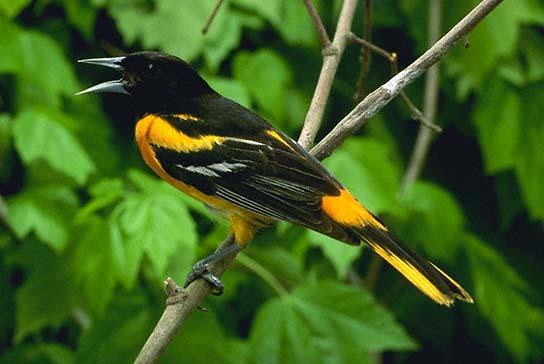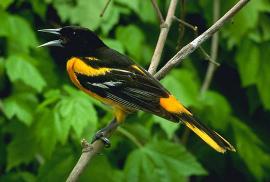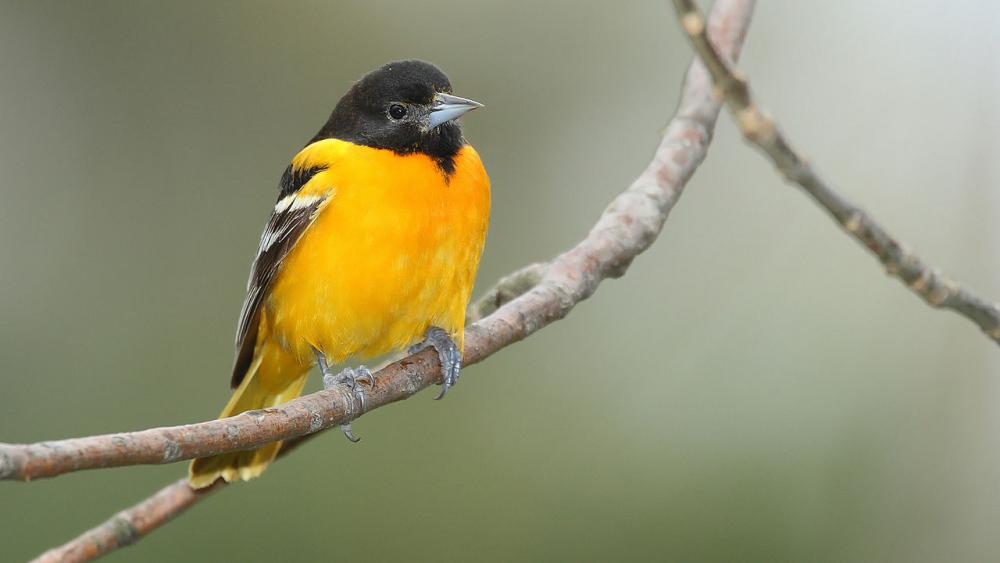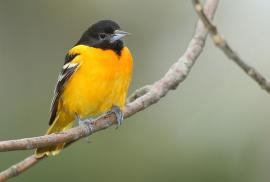Guide to Boreal Birds
Overview
Recently the Baltimore Oriole was combined with the western Bullock's Oriole as a single species, the Northern Oriole. When trees were planted on the Great Plains, the two forms extended their ranges and met. Despite the differences in their appearance, it was found that they interbred, and that most birds in the central plains were hybrids, so the birds were combined into a single species. Now, it seems that in some places the birds are choosing mates of their own type, and they are considered separate species again. The Baltimore Oriole is also the state bird of Maryland.
Description
7-8 1/2" (18-22 cm). Male has black head, back, wings, and tail; orange breast, rump, and shoulder patch. Female olive-brown, with dull yellow-orange underparts and 2 dull white wing bars.
Voice
Clear and flute-like whistled single or double notes in short, distinct phrases with much individual variation.
Nesting
4-6 grayish eggs, spotted and scrawled with dark brown and black. Nest a well-woven pendant bag of plant fibers, bark, and string, suspended from the tip of a branch.
Habitat
Deciduous woodlands and shade trees. Before the tree's decline, the American elm was a favorite nesting site for the eastern bird.
Range/Migration
This species is one of those whose breeding range appears to be shifting northward in recent years, apparently as a result of global warming. Temperature increases, which result from higher levels of carbon dioxide in the atmosphere, are also causing some birds to begin migrating earlier in the spring. This in turn may put them out of sync with the foods on which they depend. Baltimore Orioles prefer winter habitats that offer mature trees as well as a significant understory. They do well in shade-grown coffee and cacao plantations, but are losing important habitat as agricultural practices shift and shade trees are removed. The arrival of this beautiful bird in the early part of May coincides with the blooming of the fruit trees in the New England area. The mature males, first to arrive, make a colorful sight among the pink and white blossoms of the orchards.
Breeds from Saskatchewan and Nova Scotia south through Dakotas south to eastern Texas, Louisiana, and Virginia. Winters in Florida and southern Atlantic coast.





